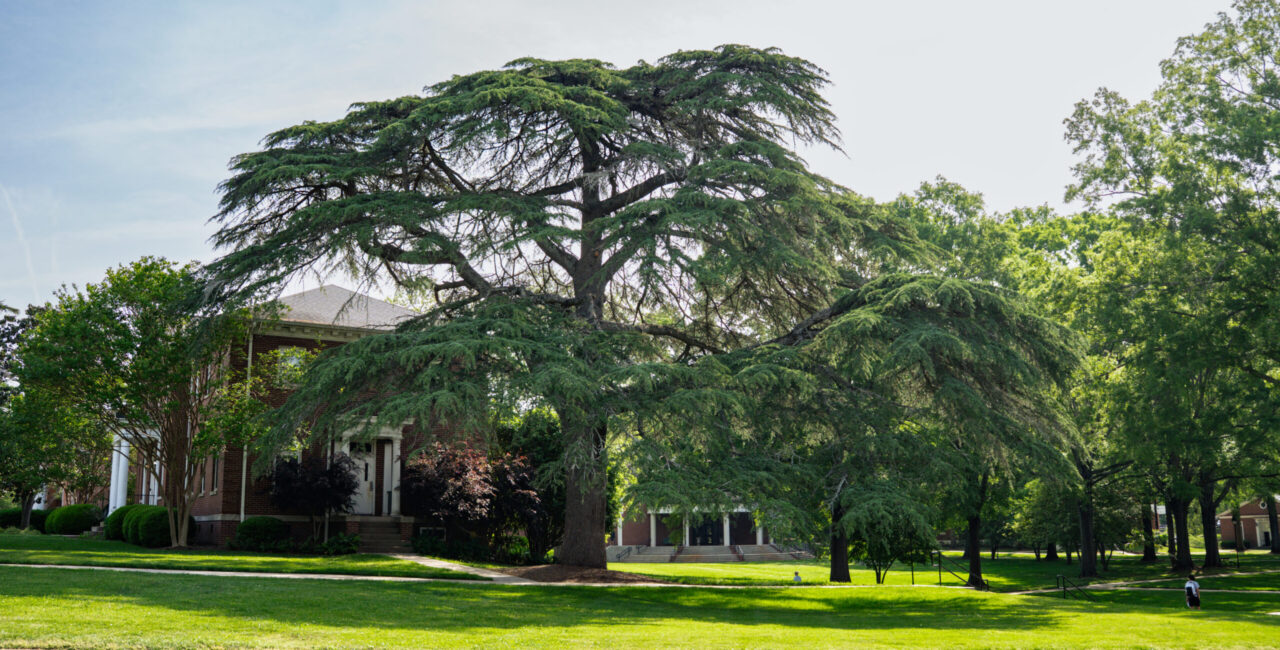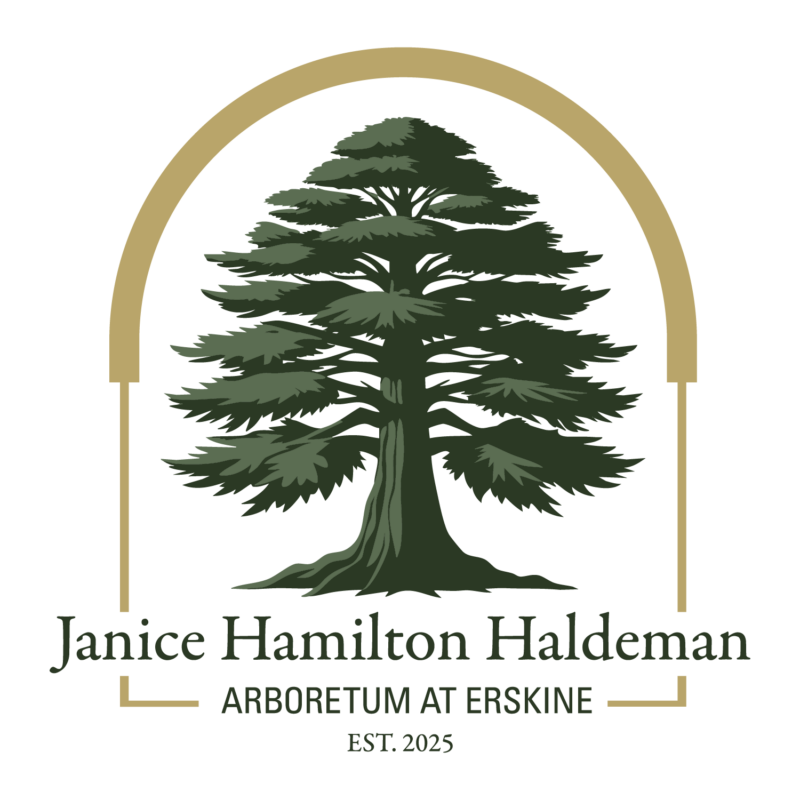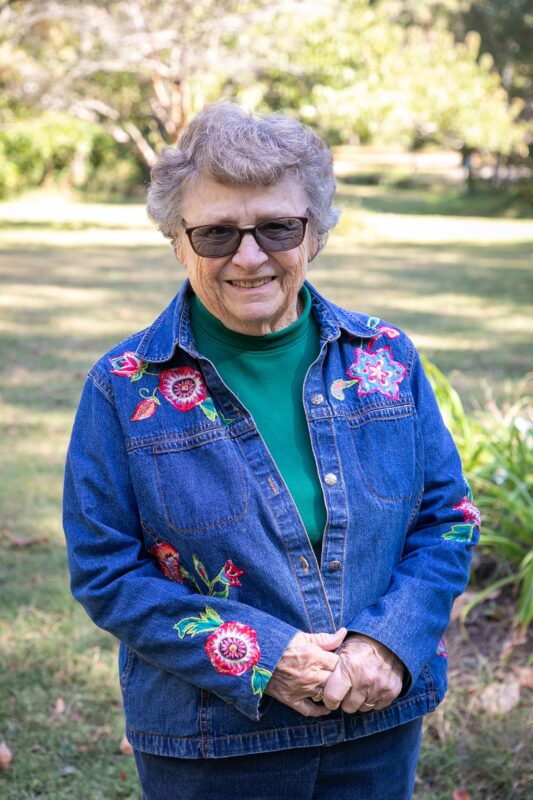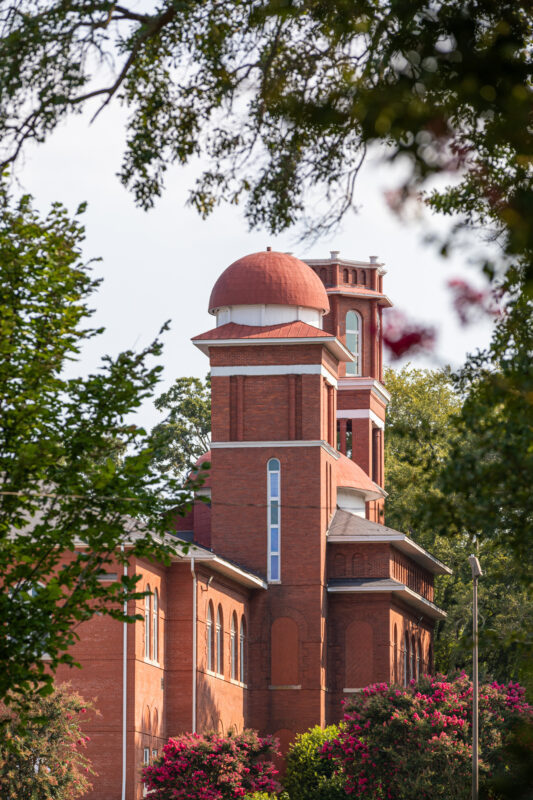
Arboretum to be dedicated at Erskine’s Flower & Garden Show
 At the Third Annual Flower & Garden Show on the Erskine campus, set for Saturday, May 17, a ribbon-cutting ceremony will mark the official opening of the Janice Hamilton Haldeman Arboretum at Erskine.
At the Third Annual Flower & Garden Show on the Erskine campus, set for Saturday, May 17, a ribbon-cutting ceremony will mark the official opening of the Janice Hamilton Haldeman Arboretum at Erskine.
An arboretum is “a botanical garden specializing in trees or woody plants,” according to ArbNet, an arboretum accreditation and networking program. A traditional arboretum has as its primary purpose “to be a tree-focused public botanic garden,” but there are also nontraditional arboreta in municipal parks, for example, or on school campuses.
It was Martin Hamilton, executive director of the South Carolina Botanical Garden at Clemson University, who suggested to Vice President for Advancement and Alumni Relations Paul Bell ’84 that the Erskine campus might qualify for designation as an arboretum.
Hamilton and his wife, Michele Dani Sanchez, assistant extension specialist with the Cooperative Extension Service at Clemson—both of whom will be speaking at the Flower & Garden Show this year—visited the Erskine campus in March 2024 “to scope it out,” Bell says, so that Hamilton could determine the topic of his keynote address at the 2024 Flower & Garden Show. Bell welcomed the couple, taking them to the Pressly Family Heritage Garden for a visit with Professor Emerita of Biology Dr. Janice Haldeman and then leading them on a campus walk.
As Bell and his guests stood in front of the Due West ARP Church on Main Street, gazing at the trees on the Circle across the street, “Martin commented that we should consider accreditation as an arboretum,” Bell reports. “Elaborating upon his thought, he said there are people who would come to campus just to see the trees.”
Bell says he “took [Martin’s] suggestion and ran with it back to Belk Hall,” where he and his staff began investigating just what applying for arboretum status might entail.

“We looked into it and found that we easily qualified for Level 1 accreditation as an arboretum,” says Senior Gifts Officer Beth Boyd. As the decision was made to pursue arboretum status, Haldeman, an avid botanist, was brought into the new project.
“Paul Bell and Beth Boyd contacted me and asked me to work with Beth on the application for becoming a certified arboretum through ArbNet,” Haldeman recalls. “Working with Beth was a real pleasure. She has done the lion’s share of the work!”
Boyd believes the longtime professor is a fitting namesake for the arboretum, and doubtless many alumni would agree.
“Jan has been a driving force behind the stewardship of the natural resources of our campus and has put a tremendous amount of time and energy into sourcing new trees and caring for established ones,” Boyd says.
“She regularly uses our campus in her teaching as a living laboratory, enriching the learning experience of the many students who have studied biology and especially medicinal botany over the years.”
For Haldeman, the naming of the arboretum “was a big surprise, and I feel humbled, excited, and very honored.”
When she joined the Erskine faculty in 1967, the young biology professor knew she had landed in a special place. “I realized from the start of my teaching career that our beautiful campus trees, shrubs, and other plants were excellent for teaching biology and botany courses,” she recalls.
One of the earliest biology labs she taught included among its activities a campus tree tour, Haldeman says. “I knew then that what we needed was a ‘Campus Tree Walk,’ including tree labels and brochure with a map.”
Obtaining a grant of $1,000 from Abbeville Savings & Loan (now Abbeville First Bank) for the tree walk project, she enlisted the assistance of students, including Jordi Fernandez ’04 and later Claire Mueller ’16, both of whom earned academic credit for their work.
Jordi worked on selecting the trees, attaching the labels, developing the map, and creating a list of “Tree Tidbits” for the brochure. Claire worked on organizing the second edition of the brochure.
“There was also enough money for me to add 12 new tree species to campus, all of which are still alive and thriving,” Haldeman notes.
Haldeman’s campus tree walk project has continued over the past decade. “We’ve moved to online, adding QR codes with tree information for tree signs and a website with a tree walk map and more!” she says with characteristic enthusiasm.

While Haldeman’s background in botany and knowledge of Erskine’s trees and plants made her an obvious choice for assisting with the arboretum application, participation in the process was challenging.
“It was a learning experience for sure!” she says. “I was made aware of how many aspects there are to maintaining a diverse collection of trees and other woody plants in the form of an arboretum.”
Life can get a little complicated when you’re applying for arboretum status, Haldeman discovered.
“First, arboretum specimens have to be cataloged and listed in a particular order,” she explains. Erskine’s specimens had been listed according to the campus tree walk, so a renumbering had to be done.
“Second, specimens’ common, scientific species, and family names are included,” she says. “Third, campus locations are listed along with their GPS coordinates. Finally, the catalog records all history of specimens, including special care, loss, removal, and replacement of specimens as well as all specimen additions to the collection.”
Bell, Boyd, and Haldeman were delighted when Erskine’s arboretum application was approved.
“The benefits of becoming an arboretum include opportunities to steward our natural resources,” Boyd says. “Our status as an arboretum provides publicity for the college as a place for research and scholarship for scientists and students and elevates our profile in the broader community.”
Join in the celebration of the Janice Hamilton Haldeman Arboretum at Erskine by attending the Third Annual Flower & Garden Show this spring. The event is set for Saturday, May 17, from 10 a.m. to 3 p.m. Admission is free.
Learn about the many activities and workshops available at Erskine’s Flower & Garden Show here.
Learn more about Erskine’s arboretum here.
Pictured at top is a Cedar of Lebanon next to McQuiston Hall on the Erskine campus.
